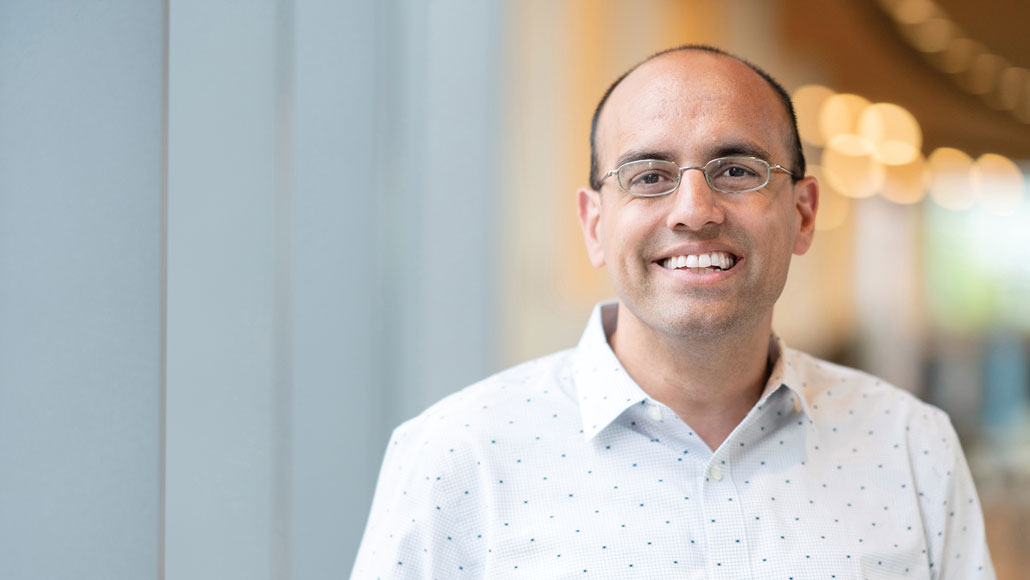Parag Pathak uses data and algorithms to make public education fairer
After designing school choice systems, he’s studying student performance

Economist Parag Pathak tackles questions of how to allocate resources in real-life settings.
Bryce Vickmark
Every year, 70,000 New York City eighth-graders get sorted into about 400 high schools across the Big Apple. But until the early 2000s, more than a third of students wound up at schools they had not chosen.
School choice systems emerged in the 1960s and ’70s after courts began ordering schools to desegregate to comply with federal law. The systems were meant to provide mostly poor, minority students zoned to underperforming schools with access to a better education. But many choice systems have still not met that goal, with parents in the know gaming the system to get their children into preferred schools while other kids end up back at their poor, neighborhood schools.
In 2003, researchers with expertise in game theory and market design overhauled New York’s school choice system to make it fairer. Parag Pathak devoted much of his time as a doctoral student in economics at Harvard University to analyzing components of the system, such as how to break a tie between two students vying for the last seat at a school. Now an economist at MIT and cofounder of the School Effectiveness & Inequality Initiative, Pathak, 39, continues to apply economics to daily life.
Economists “have a language to think about what improves welfare,” Pathak says. His work on school choice earned him a 2016 Social Choice and Welfare Prize and the 2018 John Bates Clark Medal, both awarded to economists under 40 who have made significant contributions to the field.
By tackling the question of how to allocate resources in real-life settings, Pathak serves as “a model economist,” says his MIT colleague James Poterba, president of the National Bureau of Economic Research. “He’s found ways to make the lives of people better.”
The son of Nepalese immigrants, Pathak grew up in Corning, N.Y. A numbers guy at heart, he earned a bachelor’s degree in applied mathematics at Harvard. His economics courses piqued his interest, so he stayed at Harvard to study under economist Alvin Roth. Roth, a 2012 Nobel laureate in economics now at Stanford, had already modified a well-known algorithm to match graduating medical students to residency programs around the country. Among other improvements, the program helped couples end up in the same hospital or region for training. It was an early example of how an economist could engineer a social system.
That work led to a call from a representative at the New York City Department of Education who thought residency matching could be applied to school matching. Roth agreed and roped in Pathak and economist Atila Abdulkadiroglu, now at Duke University.
Economists “have a language to think about what improves welfare.”
Parag Pathak
Pathak soon realized that the existing system, in which students ranked their top five school choices, resembled the college admissions process. Star students received multiple offers and everyone else received none. Better-off families had learned the system’s inner workings, such as which schools would consider only students who ranked that school first and which good schools were a safe bet. Families who didn’t understand the system simply listed schools in order of preference.
So the team designed a system that provided no benefit to students who obscured their true preferences. Students could now list their top 12 schools, and schools could specify their priorities, such as test scores or geographic proximity (or even prioritize specific students). The algorithm then matched students to schools, with the process ending when schools were filled or schools on students’ lists had been exhausted.
The system worked. From 2003 to 2004, the number of students who did not receive an offer from one of their chosen schools dropped from 30,000 to 3,000. Other cities have since adopted the algorithm, including Indianapolis, Washington, D.C., Denver, New Orleans, Boston and Newark, N.J. Pathak continues to work on the nitty-gritty details of the algorithm, while also explaining the system to families — outreach he sees as integral to this work.
There are still problems with equity, Pathak admits; no algorithm can increase the supply of good schools. But with data from districts that have adopted the algorithm, and permission to access student records, Pathak is now comparing students’ academic performance to find out what makes for a good education.
For instance, students who pass in-house admissions tests to gain entry into elite schools, such as New York’s Stuyvesant High School, do not typically enter school choice systems. By comparing standardized and Advanced Placement exam scores among students in Boston and New York who just made the admissions cutoff for those elite schools and those who just missed it, Pathak and colleagues could evaluate whether the experience at such a school really matters. The researchers reported in Econometrica in 2014 that the kids who got into and attended a selective school didn’t perform better on these tests. “Across the entire spectrum, we see no difference. We call this the ‘elite illusion,’” Pathak says.
Pathak uses similar study designs to investigate other urban resources, such as housing, but education remains his passion. If he could be granted one wish, he says he would design a school system from scratch. How, he asks, would you set up that system to be as equitable as possible?








